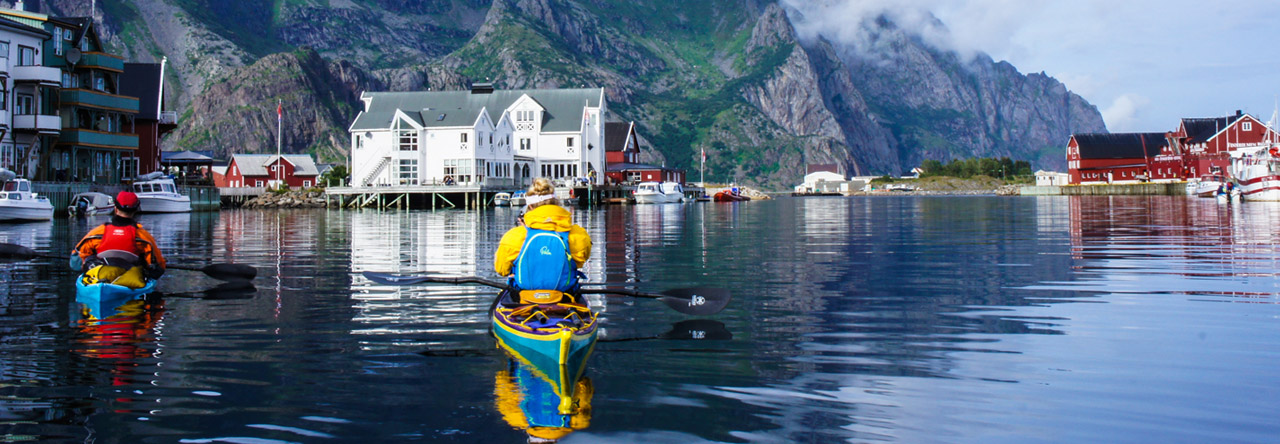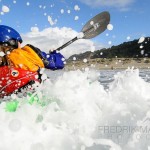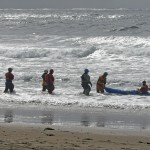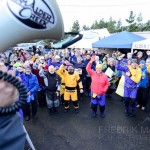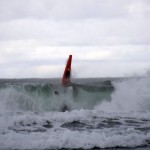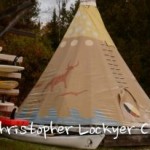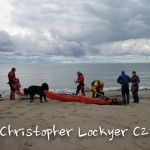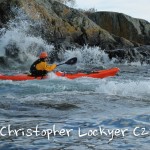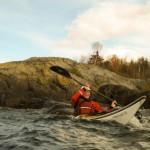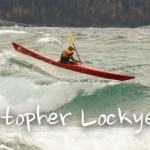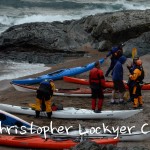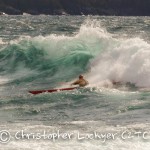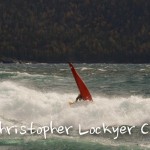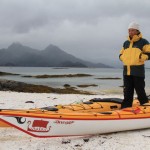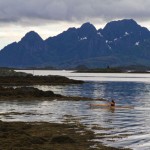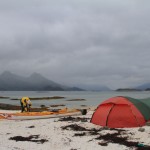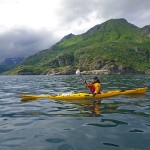Distance: 3780 miles / 6083 kilometres
Duration: 117 days (11.06.2012 – 05.10.2012)
Kayak: P & H Scorpio 170
The 7 rivers 7 continents project is a multi-year undertaking to make paddling descents of the longest river on each continent. 22 000 miles in total.
Amazon River(South America) – 6937 km (4300 miles) – completed 2007/2008
Missouri- Mississippi River (North America) – 6083 km (3780 miles) – completed 2012
Nile River(Africa) – 6650 km (4132 miles)
Yangtze River(Asia) – 6300 km (3916 miles)
Volga River(Europe) – 3645 km (2266 miles)
Murray-Darling River(Australia) – 3370 km (2904 miles)
Onyx River(Antarctica) – 40 km (25 miles)
My descent of North America’s longest river system, the Missouri-Mississippi River took 117 days paddling 3780 miles across the USA. The descent began at the river’s utmost source, Brower’s Spring in Montana’s Centennial Mountains. The spring lies at an altitude of approximately 2680m above sea level. In early June when I began my descent the spring was still covered by at least 1.5 metres of snow.
On the 11th June I set off from my established base camp amongst the dense pine trees towards the spring. I followed the upper most waterway known as Hell Roaring Creek; a steep narrow creek as closely as possible. After 5 hours of ascent I was forced on to snow shoes. In my hand I carried bear spray and called out to bears till my voice became hoarse. Finally, following 7 hours of hard uphill slog I reached the spring. Waypoint marked, images recorded, my descent could begin.

For several hours, Hell Roaring Creek alternately ran free and was covered by old snow and ice. At this time, impossible to run. Too much snow and not enough water. After another 5 hours of descent I stumbled exhausted into my camp, day 1 over.

Hell Roaring Creek runs out of steep sided canyon into a wide, flat valley floor. Still too shallow to kayak I would follow the creek for 22 miles on foot as it flowed into Upper and Lower Red Rock Lakes, closed at this time of year to paddling in order to protect nesting birds. Still with bear spray in hand, moose, deer, eagles and other birds were to be found.
As I passed the wildlife refuge office I arranged with the manager, Bill West to transport my kayak from my camp to the outlet of the lower lake. Bill was happy to do so and in his pickup we explored the refuge on the way to collect the boat. Bill dropped my kayak off and deposited me back at the office in order that I might not break my human-powered journey. With the sun setting I marched out the final 4 miles to my boat. Bill had told me to keep an eye out for a wolf pack in the area. Sure enough at dinner that evening they showed up, with little fear of my headlamp and yelling. Bigger and much more bold than coyotes they watched a while before disappearing into the night.

At dawn the next day I packed my kayak and slid into the water. Finally I was paddling. The Red Rock River flowed slowly and meandered like a lazy snake. Sometimes deep enough, though often I dragged my boat across a rocky bottom. The small river flowed into Lima Reservoir, which I crossed in a morning without a breath of wind. My first portage around the dam was short and sharp. Putting back on the water, the river now flowed much more quickly. Sieves and strainers littered the banks and bends.
Piloting a near 17 foot boat round a sharp bend on a 18 foot wide fast flowing river takes some doing. It was an intense beginning to a 4000 mile journey, but the Scorpio handled it all with ease. I pulled hard on my paddle, utilising every stroke in my arsenal.
Soon enough, trees in the river became secondary obstacles. Ranchers had begun to place fences across the narrow river. At first, a few strands of wire appeared. Sometimes I could duck underneath. Other times it meant a quick exit, pushing the kayak beneath the lowest strand and submerging myself completely into the icy water. Frustrating but all part of the journey. Next, strands of electric fence criss crossed my path. Were they live? I had no plans to find out and avoided them as best I could. Barbed wire fences were next. Exiting a fast corner to see clusters of sharp wire blocking my way necessitated some pretty quick thinking. Here and there I got caught up on the strands but managed to escape the worst. The final fence variation was a hybrid of barbed wire and roofing iron completely blocking my path. It was often a case of “WTF?”, but with no one around to complain to I simply pushed on.
The near 300 miles from Brower’s Spring to Three Forks took a little under a fortnight. It was both a beautiful and isolated descent, as well as being frustrating and mundane in it’s sameness. For days on end the river sat a metre or so below the river bank, short grass and an occasional cow poking it’s nose over the edge.
Below Clark Canyon Reservoir the river became the Beaverhead. Now, less isolated and suddenly busy. Not with paddlers but fly fisherman in drift boats. So common, sitting in deep pockets of river, it was an ordeal just keeping out of their way. Sometimes a wave from an old timer but mostly their eyes never left the quivering end of their fishing poles.
Beyond the town of Twin Bridges the Beaverhead meets the Big Hole River to form the Jefferson. My spirits soared on this stretch of waterway. Clear, fast and wide it flowed. Fields of green grass, colourful flowers and groves of cottonwoods lined the banks. This is paddling I thought.

All too quickly the Jefferson led me to Three Forks. Here it meets with the rivers, Gallatin and Madison to form the Missouri River proper. Already the muddy brown colour it will keep on it’s long meander to the ocean, the Missouri grew wide and flowed at a rapid clip.

The dammed upper covers almost 1500 miles and is pocked with a dozen lakes and dams. Free flowing here and there but for the most part a slow haul across bodies of water ranging from a few miles long to more than 200.
Easily the most challenging are the “Big 3”. Fort Peck Lake stretching more than 130 miles in length, it’s shores dry and bleak cover a greater distance the the entire coast of California. Little or no sign of man to be found. Multiple 3-5 mile open water crossings to be made on a lake where the wind can go from still to gale force in 30 seconds.
Lake Sakakawea, more than 150 miles long and 10 miles at it’s widest point. Less isolated than Peck it’s shores are more uniform and easier to follow. Entering from it’s western end is a game of guesswork. A muddy delta with multiple braids blocks access to open water for many miles. Maps are useless in this ever changing environment. Instinct combined with trial and error led me to the lake proper.
Finally, the 230 mile long Lake Oahe appears. Between 1 and 4 miles wide the lake has a reputation for being the most difficult to traverse on the entire river. Being windbound for 4 days or more is not uncommon. I made the crossing in 8.5 days, losing just a day and a half to wind.

Of the 16 lakes and dams I traversed I paddled every lake and manually portaged every dam. Sometimes this portage was a few hundred metres but often a couple of miles or more. Loading my kayak onto the cart I hauled it up and over steep tracks and cross country to search for an appropriate put-in below the huge concrete expanse holding up the river.

Gavins Point Dam, South Dakota sits just a few miles above the town of Yankton. Here, my journey reached a significant milestone. Below the dam, the Missouri would finally, after more than 1800 miles, run free till it’s waters reached the Gulf of Mexico.
My mind conjured up easy days paddling, the swift current aiding me along. The first day out of Yankton into a stiff headwind and driving rain brought me to my senses. Even though I was back to reality I was unswayed in my paddle to the ocean.
Days in my kayak were long. I tried to be on the water at 7am and would paddle till 7pm, never leaving the water. My alarm would sound like a jackhammer to my ears at 05:30 hrs every morning. Dragging myself from my warm sleeping bag I would conjure up coffee and instant oats. The task of breaking camp was smooth after a couple of months on river. Rather than stop for the toilet I carried a pee bottle and instead of pulling ashore for lunch I would chow down on chocolate bars, oat bars, trail mix and beef jerky throughout the day. As the sun began to set the search for a campsite would begin. This year, in a complete reversal to last the Missouri River is at low water. Many of the states through which it flows are in severe drought. The benefit this brought me was a plentiful supply of exposed sand bars on which to spend the night. Having found high ground, I would set up my tent and gather wood for a fire. Dinner comprised of packet rice and pouches of tuna or sardines. A fifth of the cost of dehydrated meals, just as light, if not quite as nutritious.
On a good long day of paddling between Yankton and St. Louis (where the Missouri meets the Mississippi) I could cover more than 70 miles. My cadence became so rhythmic that I could time my arrival at mile markers to less than a couple of minutes over an entire day. Some feat!

The 700 odd miles I paddled to St. Louis passed by in a couple of weeks. Long days on the water, perfect isolated campsites punctuated by the odd muddy one or stealth camping in an urban park. I would stop in towns whose waterfronts were accessible to me but avoided major centres like Omaha and Kansas City. No place to leave a kayak and gear alone and expect it to be there on your return. In small towns I would resupply with food and water, check emails and update my website before paddling on.
As the Missouri River mile markers ticked over and down towards 0, it signalled my approach to it’s confluence with the Mississippi River. First below 50, then below 20 and then 10. As mile 1 appeared the mighty Mississippi swung into view on river left. Before I knew it I was floating beyond the confluence point and into slack water where the 2 giant rivers meet. I looked up the Missouri from where I had come. All the way from the mountains of Montana to here. Slowly the current of the river took me in it’s grasp and the Missouri disappeared from view. My final look was one of sadness. I had met so many folk and experienced so many things up river. Now, the waterway was sure to be different. Slower, wider, busier. I plunged my paddle blade into the water and swung my boat downstream. Still well over a thousand miles remained on my journey to the gulf. I had better get going I thought.
St. Louis served well to resupply, repair and refresh me to continue on my way. I had been warned up river that the river below St. Louis flowed much more slowly than above. Navigating the Port of St. Louis took some concentration as barges and towboats chugged this way and that. Barges were parked in their hundreds on both river banks and anchored in the middle of the river as well. The wake from boat traffic and upstream wind gusts coupled with downstream water flow combined to make for an angry river. Waves came from all directions intent on upending my kayak. It took a couple of hours of constant paddle contact to clear this mess only to paddle into a severe storm. Caught unawares I sheltered behind a half sunken barge as trees were felled by the wind and sheets of rain cascaded down. By early evening the worst had passed and I paddled on to a marina whose docks had borne the brunt of the storm. Walkways were thrown askew and ropes a tangled mess. In spite of their own calamities the owners were more than happy for me to camp on their land.
A couple of days below St. Louis sees the Ohio River enter from river left. A mighty river in it’s own right, it adds to the already voluminous river I was paddling. Alas, rather than grow faster the river merely becomes wider. Old river towns slipped by. New Madrid and Caruthersville, two notable stops for resupply and a wander around for photos and a general explore. Once important stops on the river, now a viewing platform and a handful of loading docks for grain silos provide a tenuous link to the past.
It took almost a fortnight to travel the 500 miles from St. Louis to the major city of Memphis. It had become clear that my dreams of hard fought 70 mile days may perhaps be over. Once more, fortunate to have friends in these here parts I spent 3 days exploring the city and readying myself for the final stretch with food, boat cleaning and catching up on much needed sleep.
As had become the norm, I left the relative comfort of an urban area into pelting rain and strong headwind. But, all the same, in my kayak, with dry jacket and spray deck on I was shielded completely from the elements. The nose of my kayak easily sliced through the offending chop.
100 or so miles below Memphis I reached the town of Helena, Arkansas. A small town typical of this section of river in that it was in an unfortunate decline. No jobs, little industry and not much hope for the future. I stopped here in order to meet up with a friend of a friend and somewhat of a legend on the Lower Mississippi, John Ruskey. John runs the Quapaw Canoe Company and builds, by hand dugout canoes, as well as running programs for disadvantaged and at risk youth. I spent an evening with John and some friends on nearby Buck Island as they readied themselves for the weekend’s coming Bear Dance Festival.

Below Helena, my campsites took on surreal proportions. Camping alone, far from anyone (apart from passing barges) on enormous sand bars I swam, cooked by a fire and camped out under the stars every evening for weeks. If I had nowhere to go I would wish it to have never ended. I stopped into the towns of Greenville, Vicksburg and Natchez all in the state of Mississippi. In Natchez I was assured that now would be a good time to cease swimming each day in the river. Upstream the previous week in Vicksburg they had pulled from the river 2 15 foot alligators. Much less aggressive than crocodiles, I still had no desire to put them to the test.

With a little under 300 miles to the gulf, the river began it’s final transformation. Flow often became non-existent, sand bars disappeared, replaced with thick scrub down to the waters edge and levee banks appeared. Perhaps most difficult was the major increase in boat traffic. As far up river as Baton Rouge, ocean going tankers ply their trade. Natural gas, petrol, diesel, oil, grain and cement filled their enormous holds. Hailing from China, Hong Kong, Eastern Europe, Panama and other far flung places these ships lay anchored in huge numbers along the river. At rest they presented formidable obstacles, under steam they were a nightmare. Their speed was unreal and difficult to gauge. Crossing the now sometimes mile wide river was fraught with danger. Not only these giants lay in my path but many more barges and towboats along with speedy crew boats. From every corner and every hundred metres a boat would play chicken with me, cut across my bow or speed from behind. Throw in headwinds and sudden rain storms reducing visibility to less than 10 metres and this final run to the coast was no fun at all.

Outside New Orleans I came far too close to being machine gunned by a US Navy boat for straying too close (while trying to avoid a tanker bearing down on me). After having paddled 3700 miles rather than wisely complying with the gunners instructions I let off a tirade of expletives as I paddled away. The look of surprise on their crew’s faces was priceless. Silly in hindsight but it felt pretty right at the time.
A couple of miles past New Orleans city centre lies the inter-coastal canal. From here to open water is 2 miles. A route that some long-distance paddlers choose. Unfortunately for them it is incorrect if they wish to claim a full descent of either the Missouri-Mississippi or Mississippi alone. On the river proper still lies some 90 miles or more of slow paddling.

The last town on river with access by road is Venice, Louisiana. A mash-up of ports and marinas. Here was to be my final stop before reaching open ocean. I slept little the night before what I hoped would be my final day on river. From Venice to mile marker 0 is 10 or so miles. But this is not open ocean. Here lies the Head of Passes. It is at the mouth of the South Pass where the Gulf of Mexico lay. A further 14 miles of paddling. I needed to paddle some 20 odd miles to the gulf and if unlucky, 20 miles back upstream. A prospect I did not relish.
At first light I paddled out of the marina and on to the river once more. At Pilot Town (a scattering of buildings housing the pilots who guide the tankers from the gulf to the river) I had to cross from river right to left. By now boat traffic had been added to by crab boats, fishing boats, transport boats and more. Holy heck! I spied an opening as a tanker appeared up river a good few miles off. By the time I had paddled across the river I avoided the Goliath by less than 50 metres. A close call. Below the Head of Passes and into the South Pass and things quieted down. Here and there a fishing boat on charter would appear and I even chatted with some Fish and Game officers inquiring as to my business down in the pass.
In a few miles a lighthouse appeared in the distance. Port Eads. Flattened in Hurricane Katrina, it was just now in the process of being reconstructed. A tiny port and a couple of buildings was all there was. As I neared the lighthouse I thought I could see the flash of paddles. Couldn’t be. All the way down here? It was. Well then they must be local and decided to paddle out for a day or two down in the bayou. Closer still I could see 2 kayaks their decks adorned like my own with spare paddles, deck bag etc. I couldn’t believe it. After 3780 miles and 117 days and 1 mile from the ocean I came across Brent and Hunter from South Carolina. An hour earlier they had completed their own long distance journey from Lake Itasca to the gulf following the 2350 mile Mississippi River.
We shook hands and smiled a lot. They had secured a lift back upstream to Venice. I wanted in on that ride! I bid them goodbye with a request to wait and paddled like a madman towards open ocean. Ever so slowly breakers came into view. I paddled out of the pass and rode high over the waves. To my left nothing but water and waves, to my right the same and in front the horizon. I was there.

I had paddled 3780 miles in 117 days. By beginning at the waterway’s utmost source, Brower’s Spring, I had become the first person to make a full source to sea descent of the longest river in North America.
Additionally I had become the first person to paddle from source to sea the longest rivers in North and South America respectively.
Mark Kalch
